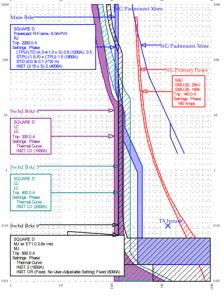As part of an Arc Flash Risk Assessment, the overcurrent protective device coordination study will determine the correct settings for relays, circuit breakers and other protective devices within your electrical power system. Minimize risk to your workers and damage to equipment caused by an electrical fault. A coordination study is conducted to detect overloads or short circuits in a power system component and, if found, isolate the component from the power system.
NFPA Article 210.5 states “Protective devices shall be maintained to adequately withstand or interrupt available fault current”. Overcurrent Protective Device Coordination studies are performed to:
- Identify deficiencies in system protection
- Provide recommended solutions to help correct problem areas
Overcurrent protective devices are appropriately sized and set to:
- Carry and interrupt load current and to withstand and interrupt fault currents (Life Safety)
- Protect distribution equipment (Equipment Protection)
- Ensure system disturbances remove the minimum amount of equipment required to safely remove a hazard (Selectivity)
A protective device coordination study is performed either during the design phase of a new system, to verify that protective devices will operate correctly in an existing system, or periodically to ensure ongoing, reliable operation during a fault. The goal of a protective device coordination study is to assure the system is capable of clearing a fault in the shortest amount of time possible, while minimizing the impact to the power system.


